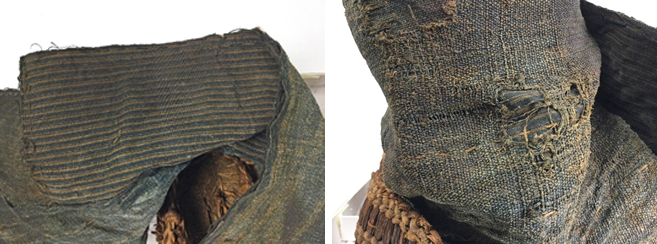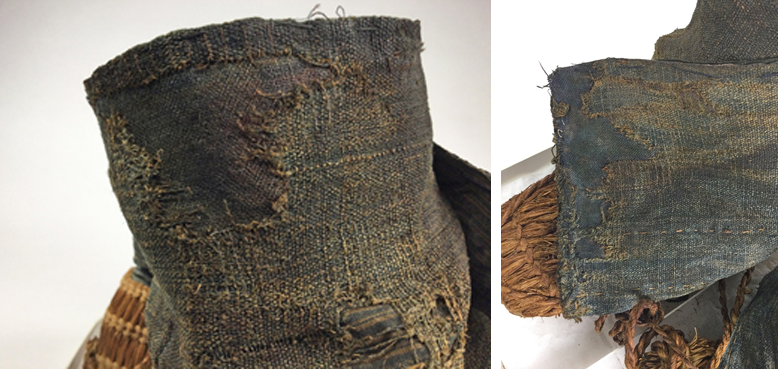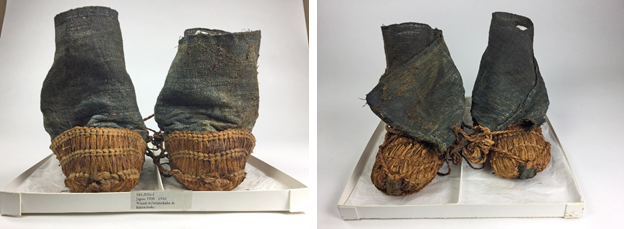In 1998 the BSM was contacted by the Japanese Footwear Museum (JFM), located in Fukuyama, Hiroshima Prefecture, Japan. They wanted to establish a relationship to exchange footwear for exhibitions. The JFM borrowed 25 pairs of shoes ranging from the 1670s to the 1860s, including sports figures and notable people, for its exhibition Fascinating Shoes.
In February 1999, the BSM opened the exhibition Japanese Footgear which ran through June 2000. It featured 55 items from its own collection that were augmented by 75 items, including support material such as wall hangings and geta shop hand bills, from the JFM (which unfortunately has closed its doors permanently).
These snow shoes, acquired by the BSM in 1984, originate from Takayama, Gifu Prefecture, a mountainous region of Japan. They were in relatively good condition with the exception of the cotton leg wraps which needed conservation before they could go on display. Each shoe consists of three sections: a rice straw sandal (wajari), a rice straw toe cap and a rice straw heel covering with the cotton wrap attached. Straw, as a material for making footwear, is a great insulator, readily available and easily sourced.
One of the challenges of treating these shoes was the fact that the braided straw ties were knotted together and could not be separated. The creases in the indigo-dyed cotton leg wraps were passively humidified over several weeks, a step that facilitated the removal of encrusted dirt. Once the fabric was straightened, the extent of loss could be determined and a template for replacement pieces was made. There was cotton missing on the shoe on the right; the owner had repaired this loss by hand sewing on a blue/brown striped fabric.
Cotton fabric of a similar weight and weave was dyed to match the original fabric. It was fortunate the owner had added the striped cotton as it provided support for the infill which was inserted between the two fabrics. The fill was hand stitched in place using colour matched threads; humidified loose fibres were then couch stitched in place.
For storage, a special tray was made from acid free mat board with an identifying label showing the artefact number and handling instructions. This would warn someone against picking up one shoe at a time, preventing future damage since the pair are tied together.
Ada Hopkins, Conservator






